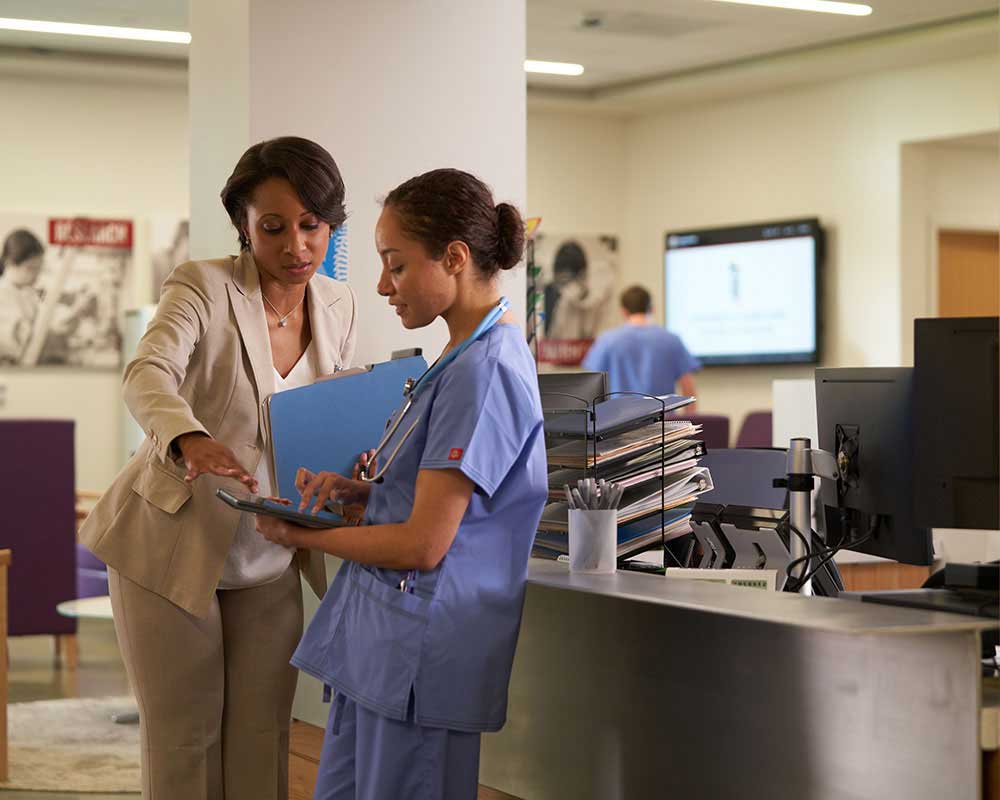Leading Skills Required to Excel in Medical Administration Roles Today
Leading Skills Required to Excel in Medical Administration Roles Today
Blog Article
Finest Practices in Medical Management for Improving Performance and Decreasing Expenses
In the ever-evolving landscape of healthcare, the pursuit of ideal practices in medical administration is vital for enhancing effectiveness and curbing expenditures. By integrating advanced innovations such as digital wellness records and telemedicine, doctor can improve procedures and boost individual care. Nevertheless, modern technology alone is not a remedy; maximizing resource allowance and cultivating collective interaction among treatment groups are just as crucial (medical administration). As companies aim to stabilize quality and expense, what methods should be focused on to achieve these double goals? The responses to these questions hold the secret to an extra lasting health care system.
Leveraging Advanced Innovation
In today's rapidly progressing healthcare landscape, leveraging advanced modern technology is no longer optional but crucial for effective clinical management. The combination of digital services into medical care systems has actually transformed the means facilities operate, simplifying procedures and improving individual treatment. Electronic Health Records (EHRs) are critical, giving detailed individual information that can be accessed quickly by licensed workers, thus lowering redundancy and decreasing mistakes. By systematizing client information, EHRs get rid of the requirement for difficult documentation and assist in smooth communication amongst medical care carriers.
Telemedicine is one more technological innovation that has actually revolutionized individual communication. It supplies convenience for both patients and health care specialists by making it possible for remote consultations, which can minimize the need for in-person brows through and optimize visit scheduling. Furthermore, telehealth systems can extend healthcare accessibility to rural or underserved areas, connecting gaps in care shipment.
Moreover, making use of Expert system (AI) and artificial intelligence is ending up being significantly prevalent in predictive analytics, allowing for early discovery of possible wellness concerns and more informed decision-making. These innovations, when integrated efficiently, can improve analysis precision and individualize client treatment strategies, ultimately resulting in boosted health care end results and operational effectiveness.
Optimizing Resource Appropriation
Reliable source allocation is essential for maximizing the performance of clinical management. By purposefully managing sources such as personnel, equipment, and financial resources, health care centers can dramatically improve their operational efficiency, enhance individual results, and minimize unnecessary expenses. The initial step in optimizing source allowance includes carrying out a comprehensive analysis of present possessions and recognizing locations where resources might be underutilized or exhausted. This analysis needs to be data-driven, using metrics and analytics to notify decision-making processes.
Prioritizing source allowance based on client requirements and service needs is important. Executing versatile staffing models can likewise optimize labor resources by readjusting personnel allowance in feedback to changing client volumes.
Funds should be meticulously kept an eye on and allocated with critical foresight to support both short-term functional needs and long-term institutional objectives. This includes investing in training programs that improve team expertises and taking on energy-efficient techniques that lower functional prices (medical administration). Eventually, an enhanced source allowance technique cultivates a lasting medical care environment that is receptive, efficient, and monetarily prudent
Streamlining Operations Processes
When medical care facilities purpose to boost operational performance, streamlining operations procedures ends up being a pivotal emphasis. Efficient workflows lessen redundancy, eliminate unnecessary steps, and boost sychronisation among healthcare professionals. This strategy not just accelerates service shipment but additionally enhances the quality of patient care.

Next, technology integration plays a significant duty in streamlining workflows. Executing digital health documents (EHRs) and computerized physician order entrance (CPOE) systems minimizes documents, lessens human mistake, and ensures info comes to all relevant workers. In addition, leveraging telemedicine platforms can improve person examinations and follow-ups, decreasing the pressure on physical facilities.

Eventually, structured operations bring about set you back reductions and improved individual contentment, cultivating a much more sustainable medical care environment.
Enhancing Data Administration
Building upon structured process, enhancing information administration comes to be a crucial component in advancing medical care administration. Reliable information monitoring systems are crucial for preserving precise person documents, improving decision-making, and ensuring conformity with regulative standards. By executing robust information monitoring his explanation solutions, healthcare centers can improve the top quality of individual care while all at once minimizing functional expenses.
One trick aspect of enhancing data administration is the integration of sophisticated digital health and wellness document (EHR) systems. These systems assist in the seamless exchange of individual details across various divisions, reducing replication of tests and reducing errors. A well-designed EHR system sustains data analytics, enabling doctor to identify trends and make educated decisions pertaining to patient treatment.
Additionally, securing individual information is vital. Adopting comprehensive cybersecurity procedures, including encryption and routine audits, guarantees the honesty and privacy of sensitive information. This not just protects people however also preserves the establishment's credibility.
Purchasing team training is an additional essential aspect. Enlightening medical care professionals on information more tips here management techniques enhances their capacity to successfully use modern technology, causing boosted client outcomes. Finally, improving data monitoring via innovative modern technology and extensive training is vital anonymous for achieving effectiveness and price reduction in clinical administration.
Fostering Collaborative Interaction
A critical part beforehand medical administration is promoting joint communication amongst healthcare professionals. Reliable interaction is critical for ensuring seamless individual treatment, optimizing therapy end results, and decreasing errors. By motivating open dialogue and coordination throughout multidisciplinary groups, medical care organizations can boost their operational efficiency and lower unneeded expenses.
Central to this strategy is the integration of communication technologies such as digital wellness documents (EHRs) and secure messaging platforms, which facilitate the rapid exchange of vital person information. These tools allow doctor to access and share information in real time, ensuring that all group participants are informed and aligned in their decision-making procedures. Normal group conferences and interdisciplinary rounds can further advertise a society of partnership and accountability.
Educating programs concentrated on boosting interaction abilities are likewise vital. These programs can assist staff develop the ability to share information clearly and pay attention proactively, hence decreasing misunderstandings and fostering a supportive workplace. On top of that, taking on standard interaction protocols, such as SBAR (Scenario, Background, Assessment, Suggestion), can improve the exchange of information, making certain that critical information are communicated succinctly and successfully. Inevitably, promoting collective communication brings about improved health care shipment and price savings (medical administration).

Conclusion
Including advanced innovation, such as digital health and wellness documents and telemedicine, along with optimized source allotment and structured operations processes, is crucial for boosting efficiency in medical administration. Efficient information monitoring and promoting collaborative interaction amongst healthcare groups are vital for lessening redundancies and boosting treatment top quality. By prioritizing preventative treatment and involving in top quality improvement efforts, health care companies can achieve substantial price financial savings and boosted patient results, thereby making certain lasting medical care shipment in a progressively complicated environment.
Report this page